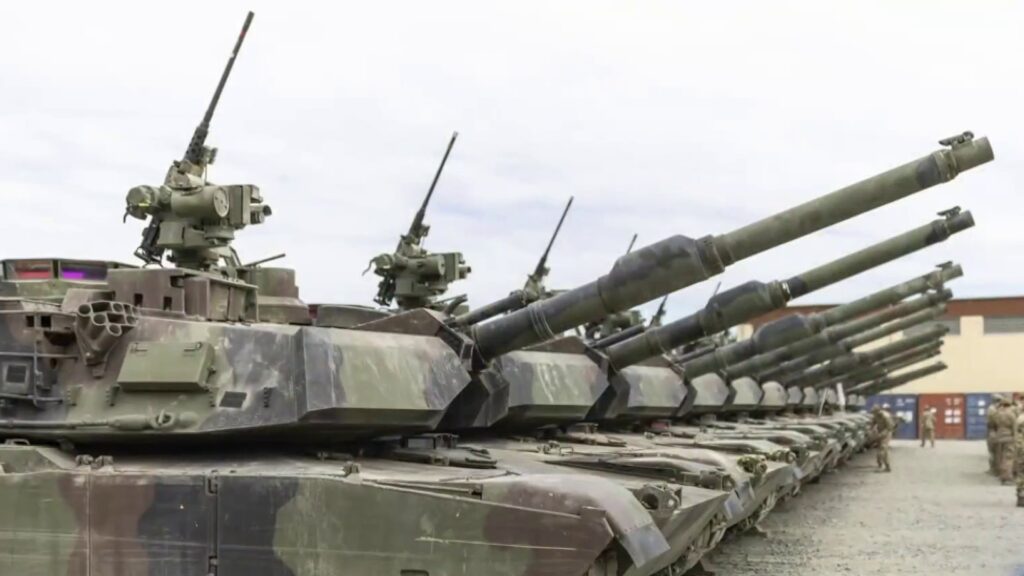After weeks of back and forth between Germany, the U.S., Poland, and other NATO allies, Germany has finally consented to send the German Leopard 1 and 2 Main Battle Tanks to Ukraine. Joining the U.S. M1 Abrams and British Challenger 2 Main Battle Tanks, which have already been dispatched. In addition to the Bradley and Marder, Armored fighting vehicles and French-built AMX-10 RC armored cars have already been supplied. These weapons systems are meant to largely replace and supersede Soviet-era weapons systems and technology and allow Ukrainian forces to better integrate into western military supply and logistic chains, which have been previously hindered by incompatibility issues between Cold War-era Soviet technology and systems and more modern western military systems.
NATO and other European States have decided to send these tanks, along with enhanced air defense systems, after months of Ukrainian requests for them because it is the firm opinion of Ukrainian and NATO military leaders that these systems can be game-changing. Allowing Ukrainian forces to break the deadlock that has developed in Ukraine over the past several months will enable them to continue pushing Russia out of their country. These systems would also be essential in fending off any renewed Russian offensives as they would provide Ukrainian forces with increased tactical flexibility and adaptability.
Previously Germany had been resistant to providing armored fighting vehicles or other heavy weapon systems for fear that such moves would result in severe escalation by Russia. This stance also caused Germany to ban the re-export of tanks and other weapons systems it had previously sold to other European States and NATO allies such as Poland and Spain. Both Poland and Spain had previously expressed a willingness to send or sell their Leopard 2 Tanks to Ukraine.
Germany and other European States also expressed concern over logistics, maintenance, and training. Leopard 1 Tanks went out of service in Germany and most other European Countries in the 1990s, and the ammunition for them is scarce and incompatible with the shot needed for other Western tanks. Leopard 1 tanks also require extensive refurbishment and highly technical maintenance regimens, making them difficult to repair quickly in the field. Lastly, there is concern over the ability of Ukraine to rapidly train their tank drivers on entirely new weapon systems, which are quite unlike the old-soviet era systems they operate.
It also must be noted that there is a substantial split between the German government and the general public about whether Germany should be supporting Ukraine and by how much. This split falls mainly along the old lines of the East-West division in the country and is driven by perceptions by some that aggressive U.S. Foreign policy provoked Russia into attacking Ukraine and overall disenchantment with the west.
Despite German hesitancy, the U.K. and the U.S. committed to meeting Ukraine’s modern tank request needs, with 14 Challenger 2 and 39 M1A1 Abrams main battle tanks. Both countries also put increasing pressure on Germany to help because, despite U.S. and U.K. assistance, German Leporad tanks remain the most desirable tank for Ukraine. They are less maintenance intensive and available in large numbers throughout Europe and are easier to train on than American and U.K. tanks which are notoriously fuel and maintenance intensive.
Last week the German government under Olaf Scholz’s reversed its position and granted export licenses for both Leopard 2 and Leopard 1 tanks, authorizing the re-export of Leporad 2’s from Poland. Additionally, they began negotiations to re-acquire Gepard anti-air systems from Qatar and ammunition supplies for the Leopard 1’s from Switzerland. Germany has also helped to sponsor Ukraine’s application for membership to the E.U., which Ukraine announced it intended to achieve within two years, although how realistic that goal is remains to be seen. U.S. reassurances and promises of increased logistical and military support to her European allies brought about this reversal in German policy. According to the Financial Times, Chancellor Olaf Scholz was concerned that since the Leopard Tank supply to Ukraine depended on his backing, any green light would be seen by Moscow as a German drive unilateral escalation. A concern that disappeared with the commitment of the U.K. and the U.S. to supply tanks as well.
As we now approach a year since the Russian invasion plunged Ukraine into a fight for its life and brought the world to the brink, this shows no signs of stopping. But despite the internal debate, and logistical constraints, it appears that the E.U. and NATO support, specifically German support, remains unwavering behind Ukraine in its fight for freedom against the Russian invaders.

